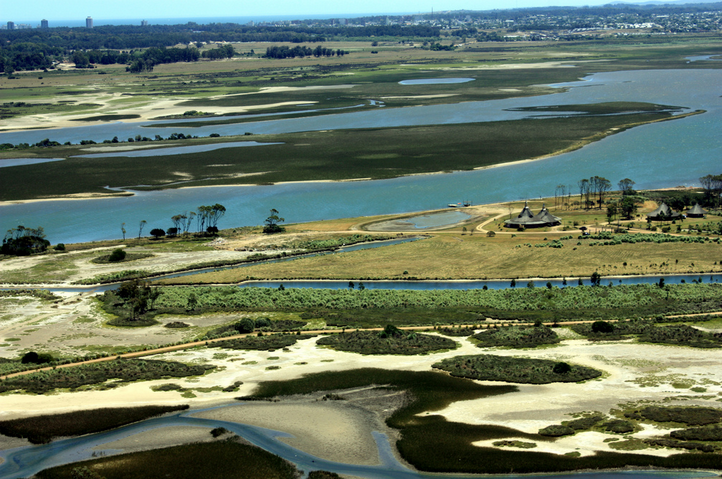Wetlands spotlight shines on Uruguayan paradise
The spotlight will shine on Uruguay's spectacular Bañados del Este y Franja Costera wetland when it hosts the 12th Meeting of the Conference of the Contracting Parties to the Ramsar Convention on Wetlands (COP12) in Punta del Este between 1-9 June.
Background and History
The Bañados del Este y Franja Costera wetland is located on the eastern side of Uruguay, sharing a border with Brazil and taking in some of the country’s South Atlantic coast. An internationally recognised biosphere reserve, it comprises a vast complex of coastal wetlands, including various lagoons and parts of rivers. Altogether, these form a rich habitat for an assortment of wildlife, including myriad species that are categorised as near-threatened or endangered – one notable example is the juvenile green turtle (Chelonia mydas). Bañados del Este y Franja Costera was added to the Montreux Record, the register for wetlands where ecological changes have occurred or are occurring because of human interference, in July 1990. The area had already been designated as a wetland of international significance in 1984, thereby coming under the auspices of the Convention on Wetlands (or Ramsar Convention) which is committed to the conservation of vulnerable wetlands while achieving sustainable development by delivering a framework action at local and global levels.
Size and Location
The Bañados del Este y Franja Costera wetland is situated in the departments of Rocha and Treinta y Tres in eastern Uruguay (its coordinates are: 33°48'S 053°50'W). The site covers an approximate area of some 407,408 hectares. Many of the country’s rivers flow east toward the Atlantic and empty into lagoons in the coastal plain – the largest of these is Laguna Merin, Uruguay’s easternmost destination and part of the reserve.
Flora and Fauna
The diverse ecosystem in Bañados del Este y Franja Costera includes an array of birds, marine life and mammals. The area serves as an important wetland for upwards of twenty species of locally nesting as well as migratory shorebirds that breed in the Nearctic realm and winter in Uruguay. Avian residents and visitors alike avail themselves of a rich marine life which encompasses algae, invertebrates and an economically important fishery constituting approximately eighty species. Larger marine species such as dolphins, sea lions and whales can also be found here, as can the juvenile green turtle (Chelonia mydas) which was selected as a flagship species to act as an ambassador for this habitat. The area offers a developmental environment for the juvenile green turtle, which underlines just how essential the wetland is in the conservation of this endangered reptile and other at-risk species – among them two toad members of the Bufonidae family (Melanophryniscus sanmartini and montevidensis), the latter known as Darwin’s toad, and the Pearson's tuco-tuco (Ctenomys pearsoni), a burrowing rodent endemic to Uruguay. What’s more, and typical of the region, it supports an indigenous palm and several threatened plants.
Challenges and threats
The reserve has suffered from significant degradation largely as a result of illegal fishing, overexploitation of its marine resources, plus agricultural and tourism developments. This combination of overuse and human-interference activities, compounded by insufficient management of the situation, has caused a decline in the wildlife population of Bañados del Este y Franja Costera. In consequence, Ramsar has introduced a proposal as part of its 2014 ‘Investing in Wetlands’ initiative which aims to implement a ‘wise use plan’ for what is a marine-protected area, drawing on the experiences of local bodies; booklets summarising the project which will be available internationally. The spotlight should be shone even more intensely on this corner of Uruguay when it hosts the 12th Conference of the Ramsar Convention in Punta del Este – south from the wetland, in neighbouring Maldonado province – from 1 to 9 June this year. The conference, taking place under the theme ‘Wetlands for our Future’, will assess the progress of the convention and the sustainable use of wetlands to date, and will share knowledge and experience to further improve the conservation of wetlands.






